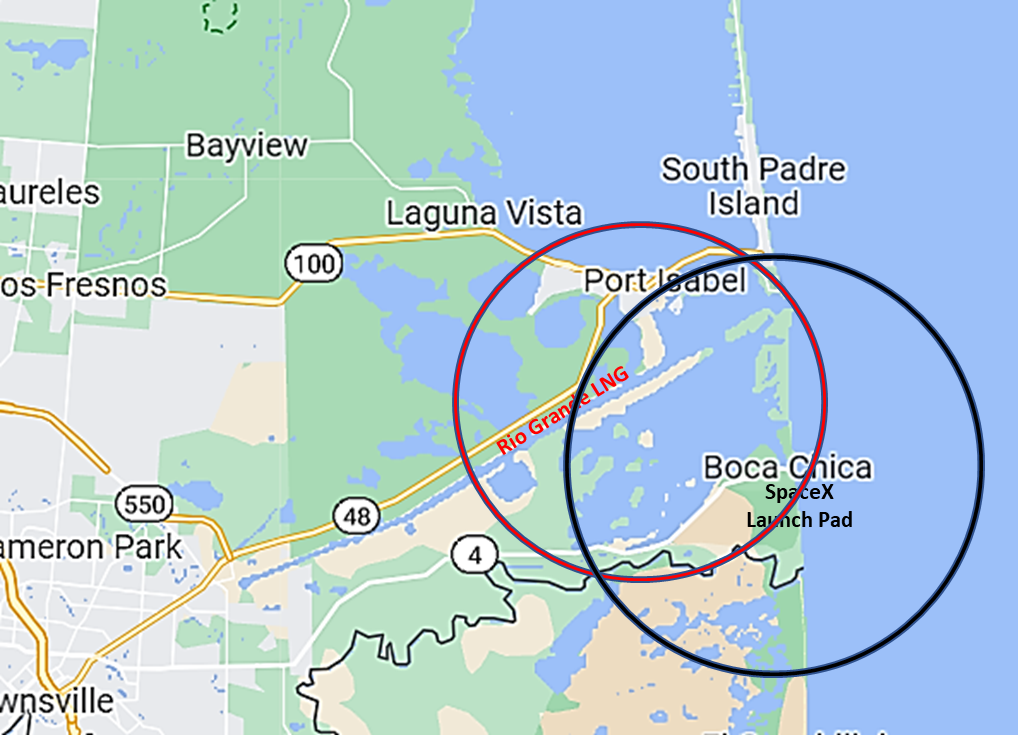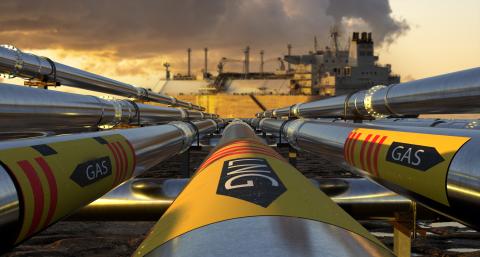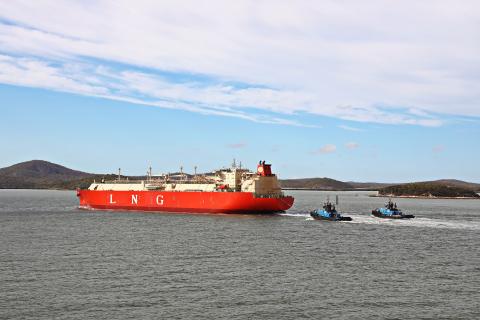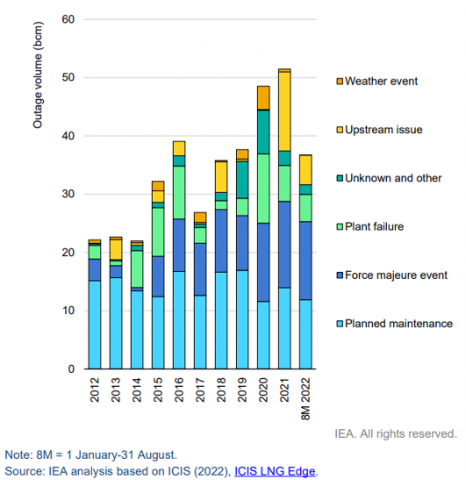Building LNG terminal close to rocket launches could prove costly

Key Findings
The location of a proposed LNG export terminal near Brownsville, Texas, poses safety risks to the public
The Rio Grande LNG plant would be less than six miles from a SpaceX facility that has reported multiple explosions
A developer-sponsored safety assessment presented to federal regulators used the characteristics of smaller rockets that decreased the risks posed by the LNG project
The SpaceX explosions should serve as warnings to investors—and the local community—that the LNG project is a bad idea
Less than two months ago, the SpaceX Starship rocket—the largest ever built—erupted in a fiery explosion only minutes after it was launched. The rocket had no crew and there were no casualties, but the explosion caused far more environmental damage than expected. The rocket engines’ thrust was so powerful that it obliterated the SpaceX launch pad, hurling chunks of concrete and rebar up to a mile away, while dispersing a plume of pulverized concrete as much as 6.5 miles from the launch site. The Federal Aviation Administration has halted SpaceX’s heavy rocket program, pending an investigation.
The area around the SpaceX launch facility, a few miles east of Brownsville, Texas, is relatively undeveloped, which may have helped limit the damage caused by the blast. But just last week, the developer of the Rio Grande LNG project, NextDecade, announced it had signed a deal that could pave the way for the liquefied natural gas (LNG) plant to be built less than six miles from the SpaceX launch site.
IEEFA has already pointed out the financial risks that NextDecade and its partners face if they move forward with the Rio Grande LNG project. A final investment decision is expected by the end of June. But the financial risks pale in comparison with the safety, health, and environmental risks of putting two risky projects so close together.
SpaceX is no stranger to catastrophe. Prior to its inaugural launch (which ended in an explosion), the company’s Starship program reportedly had experienced explosions in eight of 15 prototype tests. It’s little wonder: SpaceX CEO Elon Musk has likened the Starship’s 33 powerful rocket engines to “a box of grenades.” Explosions when testing rocket designs are a known risk and potential consequence of the research.
LNG plants can also explode—as demonstrated by the eruption of an LNG terminal in June 2022 that sent a fireball 450 feet into the sky near Freeport, Texas. The explosion was caused by human errors in valve management and safety monitoring that resulted in an explosion that burst the pipe, followed by a vapor cloud explosion and fire.
Luckily for Freeport LNG and the surrounding community, the explosion did not damage the storage tanks or liquefaction trains; otherwise, the effects would have been far more severe. Still, the resulting outage had a significant impact. The damages to the facility were estimated at $67 million, steep but paling in comparison to the economic damages suffered by exporters using Freeport LNG. JERA, Osaka Gas, BP, TotalEnergies, and SK E&S reportedly suffered collective losses topping $1 billion due to their inability to use the terminal for eight months during repairs.
An unplanned rocket launch or landing catastrophe triggering an explosion at a nearby LNG terminal would likely result in much greater devastation and loss than the Freeport LNG vapor cloud explosion.
In October 2016, the Federal Energy Regulatory Commission (FERC) asked questions about the proximity and the risks posed by building an LNG terminal so close to a rocket launch pad. Rio Grande LNG hired ACTA Inc. to conduct an assessment, which it then used to respond to FERC questions. ACTA’s March 2017 report relied on data for the less-powerful Falcon 9 V1.1 and Falcon Heavy rockets to reach conclusions concerning threats posed by potential debris, blast overpressure, distance focused overpressure, thermal, and plume hazards to the LNG terminal.
ACTA estimated there was a 1-in-100,000 chance that debris from a launch’s flight (i.e., debris falling from the sky due to an explosion) would strike a critical area of the LNG terminal. For ground explosions, the computed distance for 99% containment of debris was 4,800 feet. But ACTA based its risk calculations primarily on an assessment of the two Falcon rockets in service at the time of the report, which are much smaller than the Starship rocket.
Six years have passed since Rio Grande LNG filed its March 21, 2017, response to FERC about launch vehicle failures by SpaceX and the hazards posed to the proposed LNG terminal. The recent Starship launch explosions provide a compelling reason to recompute the risks posed by the Rio Grande LNG terminal’s proximity to SpaceX.
Both debris size and distance are serious concerns, given the site’s history. In a March 30, 2021, launch, the SN11 prototype exploded upon landing. The force of the blast scattered debris across Brazos Island State Park and Boca Chica State Park. The largest piece recovered was a 1,500-pound actuator component. Special equipment had to be brought in to remove the debris from the affected area.
In April, the thrust of the rocket engines from the Starship destroyed the launch pad at Boca Chica, sending debris (cement and reinforcing bar) miles from the launch site. The reported scatter radius extended 6.5 miles from the launch pad, including fine particulates, according to the U.S. Fish and Wildlife Service. The black circle in Figure 1 illustrates how far debris scattered.

Figure 1: 5.9 mile distance between Rio Grande LNG Terminal and SpaceX Starbase (Red circle shows safe distance per HUD regulatory policy)
Source: Google Earth
The greater hazardous intensity from recent launches is related to size. Simply put, a larger rocket requires more fuel and greater thrust than a smaller rocket. The SpaceX Starship rocket, weighing 11 million pounds, is more than three times larger than its Falcon Heavy rocket. The ACTA report, however, did not consider the SpaceX Starship in its study. It also failed to consider that its fuel (liquid methane and liquid oxygen) is different from the fuel used by the Falcon 9 V1.1 and Falcon Heavy. A comparison of unplanned explosions between the two sizes will yield a greater impact from the larger rocket.
The size of an LNG terminal affects the size and impact distance of its possible explosion, as well. The total planned capacity for Rio Grande LNG is 27 million metric tons per annum (mtpa), almost double the Freeport LNG capacity of 15 mpta. If Rio Grande LNG were to experience an explosion, then the costs would likely be far greater than the losses experienced from the Freeport LNG explosion.
The size of the proposed Rio Grande LNG terminal, coupled with the likelihood that NextDecade’s failure to include Starship data in its submission to FERC severely understates the hazards posed by Starship launches and spells potentially troubling risks for the local community.
The U.S. Department of Housing and Urban Development (HUD), for example, has rules that prevent it from approving projects that pose a risk of fire. The rules would prohibit any assistance to a project located within 6.2 miles of the Rio Grande facility, since its storage tanks would hold as much as the equivalent of 95 million gallons of LNG. The red circle in Figure 1 represents what HUD regulatory policy would deem a safe distance from the proposed Rio Grande LNG terminal for residential housing in the event of an explosion. The odds of a severe mishap are significantly greater than what has been represented by FERC.
We can’t say why FERC failed to ask for more information about the risks posed by the larger rocket, which had been tested and launched since the ACTA report was issued. But the proximity of SpaceX to the planned site for the Rio Grande LNG terminal and the recent explosions should serve as a warning to investors and insurers regarding the financial and safety risks posed by the proposed Rio Grande LNG project.


















